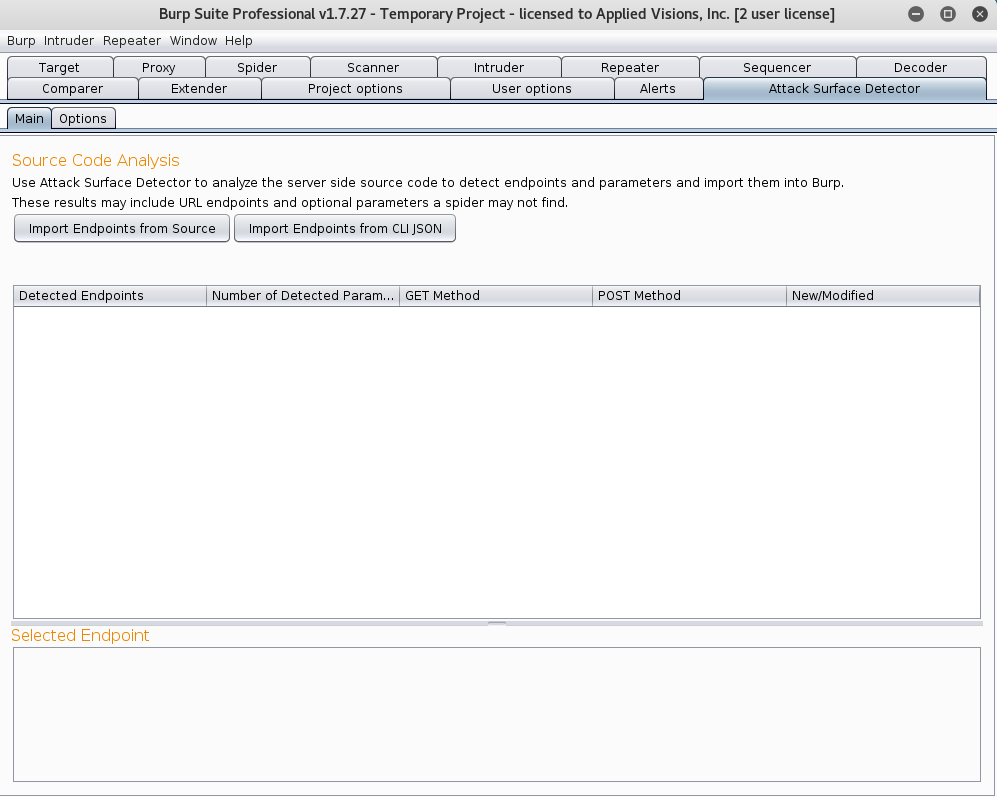-
Notifications
You must be signed in to change notification settings - Fork 27
Home

During web application penetration testing, it is important to enumerate your application's attack surface. While Dynamic Application Security Testing (DAST) tools (such as Burp Suite and OWASP ZAP) are good at spidering to identify application attack surfaces, they will often fail to identify unlinked endpoints and optional parameters. These endpoints and parameters that aren't found often go untested, which can leave your application open to an attacker.
This tool is the Attack Surface Detector, a plugin for Burp. This tool figures out the endpoints of a web application, the parameters these endpoints accept, and the data type of those parameters. This includes the unlinked endpoints a spider won't find in client-side code, or optional parameters totally unused in client-side code. The plugin then imports this data into Burp so you view the results, or work with the detected endpoints and parameters from the target site map.

The Attack Surface Detector uses static code analyses to identify web app endpoints by parsing routes and identifying parameters (with supported languages and frameworks).